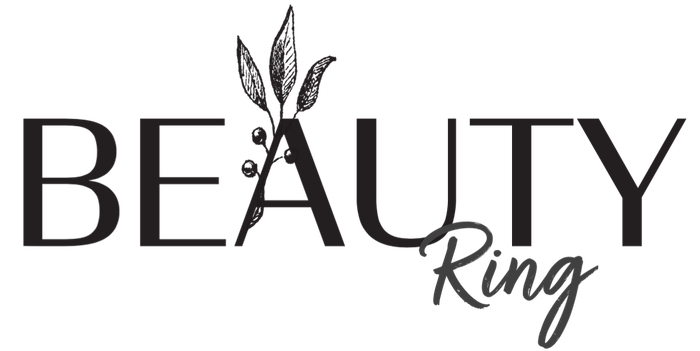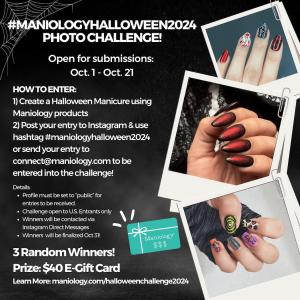The aromatherapy products market was valued at $2.3 billion in 2021, and is estimated to reach $5.3 billion by 2031, growing at a CAGR of 9% from 2022 to 2031.
”
— Allied Market Research
WILMINGTON, DE, UNITED STATES, October 3, 2024 /EINPresswire.com/ — The aromatherapy products market has experienced robust growth in recent years, driven by the rising popularity of holistic wellness and alternative therapies. Aromatherapy, which involves the use of essential oils and aromatic plant extracts to improve physical and psychological well-being, has gained mainstream acceptance due to its perceived health benefits, including stress relief, mood enhancement, and the promotion of relaxation. The market includes a wide range of products such as essential oils, diffusers, skincare, candles, and bath products, with consumers increasingly seeking natural solutions for their health and wellness needs.
Market Overview
The aromatherapy products market was valued at $2.3 billion in 2021, and is estimated to reach $5.3 billion by 2031, growing at a CAGR of 9% from 2022 to 2031, driven by increasing consumer awareness about natural wellness solutions and a growing preference for non-invasive treatments for mental and physical health. Aromatherapy products are now commonly used in homes, spas, healthcare facilities, and wellness centers. The growing body of scientific research supporting the effectiveness of aromatherapy in managing stress, anxiety, pain, and insomnia has further propelled market growth.
𝐃𝐨𝐧’𝐭 𝐦𝐢𝐬𝐬 𝐨𝐮𝐭 𝐨𝐧 𝐲𝐨𝐮𝐫 𝐒𝐚𝐦𝐩𝐥𝐞 𝐂𝐨𝐩𝐲: https://www.alliedmarketresearch.com/request-sample/A16869
Aromatherapy products are now widely available through retail outlets, e-commerce platforms, and direct-to-consumer channels, making them accessible to a global audience. The rising demand for natural, organic, and plant-based products, coupled with the increasing focus on personal care and self-care routines, has expanded the market significantly.
Key Trends Shaping the Market
Growing Popularity of Natural and Organic Products
As consumers become more health-conscious and wary of synthetic chemicals, there is a growing shift toward natural and organic products in the personal care and wellness sector. Essential oils, the cornerstone of aromatherapy, are naturally derived from plants, which makes them appealing to consumers who prefer eco-friendly and non-toxic products.
Rise of Mental Health Awareness
With increased awareness around mental health issues, including stress, anxiety, and depression, consumers are looking for alternative therapies to complement traditional treatment. Aromatherapy is seen as a natural way to promote relaxation and emotional well-being. Scents like lavender, chamomile, and eucalyptus are widely used for their calming and soothing properties, contributing to the rise in demand for essential oils and diffusers.
Integration with Home Wellness and Lifestyle Products
Aromatherapy is increasingly being integrated into broader home wellness and lifestyle products. This trend is evident in the growing market for aromatherapy diffusers, candles, and air fresheners, which enhance home environments while offering health benefits. The combination of aromatherapy with lifestyle products, such as sleep aids and stress-relief kits, has resonated with consumers looking to create calming spaces in their homes.
E-commerce and Direct-to-Consumer Growth
The rise of e-commerce has made aromatherapy products more accessible than ever. Online platforms allow consumers to easily browse and purchase a wide range of products, from essential oils to home diffusers, with personalized options like subscription boxes for ongoing delivery. The growth of direct-to-consumer (DTC) brands, which often focus on natural and clean products, has helped drive market growth.
Scientific Research and Validation
Ongoing scientific research into the benefits of aromatherapy has contributed to its growing credibility as a complementary wellness solution. Studies have shown that certain essential oils can help manage pain, anxiety, insomnia, and skin conditions, adding legitimacy to the market and encouraging further product development and consumer trust.
Growth Drivers
Rising Consumer Awareness of Health and Wellness
Consumers are increasingly focused on health and wellness, particularly natural and preventive solutions. Aromatherapy fits into this trend as it offers a non-invasive, natural way to manage stress, improve sleep, and support mental health. Additionally, the increasing popularity of self-care routines has driven the use of aromatherapy products such as bath oils, massage oils, and skin-care blends.
Expansion in Personal Care and Beauty Sectors
Aromatherapy has found its way into the personal care and beauty industries, with essential oils being infused into skincare, haircare, and body care products. Many beauty brands are using essential oils in their formulations due to their antimicrobial, anti-inflammatory, and therapeutic properties. This has expanded the market beyond traditional uses, making aromatherapy a part of the broader wellness and beauty movement.
Increased Application in Medical and Therapeutic Settings
The integration of aromatherapy into medical and therapeutic settings, including hospitals, clinics, and rehabilitation centers, is becoming more common. Essential oils are used to manage symptoms related to pain, anxiety, and sleep disorders in patients undergoing treatment. Aromatherapy is also being adopted in palliative care and elderly care, where it is used to improve mood and comfort.
Global Wellness Movement
The global wellness movement, which emphasizes holistic approaches to health, has propelled the demand for aromatherapy products. Consumers are now more inclined to invest in products that promise a comprehensive wellness experience, which includes mind-body balance. The growing trend of incorporating wellness practices into daily routines, such as meditation and yoga, has further driven the use of essential oils and diffusers.
Challenges in the Market
Lack of Regulation
Despite the popularity of aromatherapy products, the market faces challenges due to limited regulation. Many essential oils and aromatherapy products are sold without strict oversight, which can lead to variations in quality and safety. The presence of synthetic or diluted oils marketed as natural can undermine consumer trust, making it crucial for brands to prioritize transparency and authenticity.
Allergies and Sensitivities
Some consumers may experience allergic reactions or sensitivities to certain essential oils. This can limit the widespread use of aromatherapy products, particularly for individuals with sensitive skin or respiratory issues. Brands need to focus on education and clear labeling to help consumers make informed choices based on their personal needs and potential sensitivities.
Availability of Low-Cost Synthetic Alternatives
The market is also challenged by the availability of low-cost, synthetic alternatives to natural essential oils. These products may mimic the scent of essential oils but do not provide the same therapeutic benefits. The proliferation of these alternatives can lead to consumer confusion and make it difficult for authentic, high-quality products to stand out.
𝐃𝐨 𝐏𝐮𝐫𝐜𝐡𝐚𝐬𝐞 𝐄𝐧𝐪𝐮𝐢𝐫𝐲 𝐁𝐞𝐟𝐨𝐫𝐞 𝐁𝐮𝐲𝐢𝐧𝐠 https://www.alliedmarketresearch.com/purchase-enquiry/A16869
Future Opportunities
The aromatherapy products market is poised for significant growth, with a projected CAGR of 8-10% over the next five years. Key opportunities for expansion include:
Product Innovation: Brands are likely to focus on innovative delivery systems for aromatherapy products, including wearable aromatherapy, scented patches, and portable diffusers. These innovations will cater to consumers looking for convenience and portability.
Cross-Sector Applications: Aromatherapy is expected to find more applications in wellness tourism, hospitality, and corporate wellness programs. Hotels and spas are increasingly offering aromatherapy experiences to enhance guest relaxation, while employers are exploring aromatherapy as part of stress-management programs for employees.
Sustainable Sourcing and Packaging: As consumers prioritize sustainability, brands that focus on ethical sourcing of essential oils and eco-friendly packaging will gain a competitive edge. Transparent supply chains and organic certifications will be key selling points in the future.
Customization and Personalization: With the rise of personalized wellness, there is potential for brands to offer custom aromatherapy blends tailored to individual needs. Consumers are increasingly looking for products that cater to their specific wellness goals, whether it’s relaxation, focus, or energy enhancement.
Regional Insights
North America: The largest market for aromatherapy products, driven by high disposable income, wellness trends, and the popularity of natural products. The U.S. leads in both product consumption and innovation, with a strong presence of e-commerce platforms and wellness influencers promoting aromatherapy.
Europe: A significant market with strong demand for organic and natural personal care products. Aromatherapy is widely integrated into beauty, healthcare, and spa services, particularly in countries like Germany, France, and the UK.
Asia-Pacific: Expected to witness rapid growth, particularly in countries like China, India, and Japan, where traditional practices of healing and wellness align with aromatherapy principles. The rise of urbanization and increasing disposable incomes in this region is contributing to market growth.
Conclusion
The aromatherapy products market is on a steady growth trajectory, driven by the global shift toward wellness, natural products, and holistic health solutions. As more consumers seek out natural, eco-friendly, and therapeutic options for managing stress, anxiety, and general well-being, the demand for aromatherapy products will continue to rise. With innovations in product offerings and increased integration into various sectors, the future of the aromatherapy market looks promising, providing numerous opportunities for brands to capitalize on this wellness trend.
𝐇𝐚𝐯𝐞 𝐚 𝐋𝐨𝐨𝐤 𝐚𝐭 𝐑𝐞𝐥𝐚𝐭𝐞𝐝 𝐑𝐞𝐬𝐞𝐚𝐫𝐜𝐡 𝐑𝐞𝐩𝐨𝐫𝐭𝐬 𝐢𝐧 𝐭𝐡𝐞 𝐂𝐨𝐧𝐬𝐮𝐦𝐞𝐫 𝐚𝐧𝐝 𝐆𝐨𝐨𝐝𝐬 𝐃𝐨𝐦𝐚𝐢𝐧:
𝐇𝐨𝐦𝐞 𝐎𝐟𝐟𝐢𝐜𝐞 𝐅𝐮𝐫𝐧𝐢𝐭𝐮𝐫𝐞 𝐌𝐚𝐫𝐤𝐞𝐭 https://www.alliedmarketresearch.com/home-office-furniture-market-A12536
𝐀𝐬𝐞𝐩𝐭𝐢𝐜 𝐏𝐫𝐨𝐜𝐞𝐬𝐬𝐢𝐧𝐠 𝐌𝐚𝐫𝐤𝐞𝐭 https://www.alliedmarketresearch.com/aseptic-processing-market-A11905
𝐒𝐧𝐚𝐢𝐥 𝐁𝐞𝐚𝐮𝐭𝐲 𝐏𝐫𝐨𝐝𝐮𝐜𝐭𝐬 𝐌𝐚𝐫𝐤𝐞𝐭 https://www.alliedmarketresearch.com/snail-beauty-products-market-A16873
David Correa
Allied Market Research
+1 800-792-5285
email us here
Visit us on social media:
Facebook
X
Legal Disclaimer:
EIN Presswire provides this news content “as is” without warranty of any kind. We do not accept any responsibility or liability
for the accuracy, content, images, videos, licenses, completeness, legality, or reliability of the information contained in this
article. If you have any complaints or copyright issues related to this article, kindly contact the author above.
![]()
Originally published at https://www.einpresswire.com/article/748681875/aromatherapy-products-market-2031-competitive-analysis-and-industry-forecast-at-a-cagr-of-9-during-2021-2031




